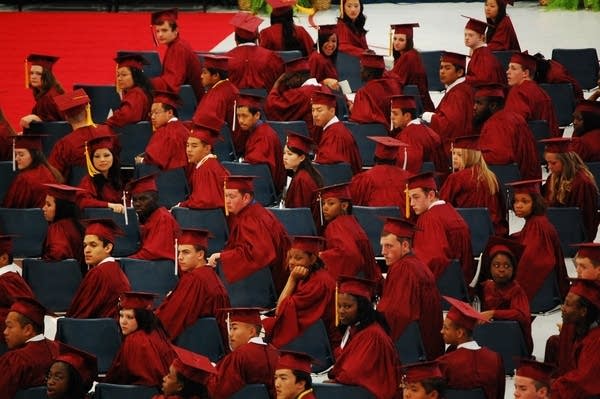What happened to social and economic opportunity?

It's getting harder to make it in America -- especially if you're starting out with less.
In Foreign Affairs last month, Lane Kenworthy wrote:
As gender and race have become less significant barriers to advancement, family background, an obstacle considered more relevant in earlier eras, has reemerged. Today, people who were born worse off tend to have fewer opportunities in life.
Create a More Connected Minnesota
MPR News is your trusted resource for the news you need. With your support, MPR News brings accessible, courageous journalism and authentic conversation to everyone - free of paywalls and barriers. Your gift makes a difference.
And it's not just in adulthood. The growing class gap in America is wider than the race gap in student test scores, said Kenworthy on The Daily Circuit Wednesday, Jan. 9, 2013.
"A lot of the gap between kids from low-income homes and those from high-income homes is already there by the time they enter kindergarten," he said.
A study from the Brookings Institution looked at that childhood gap:
Children from less advantaged families tend to fall behind at every stage. They are less likely to be ready for school at age 5 (59% vs 72%), to achieve core academic and social competencies at the end of elementary school (60% vs 77%), to graduate from high school with decent grades and no involvement with crime or teen pregnancy (41% vs 70%), and to graduate from college or achieve the equivalent income in their twenties (48% vs 70%).
One of the authors of this study, Isabel Sawhill, also joined The Daily Circuit. She said the opportunity gap isn't just about the money higher income homes have.
"One of the reasons that children from more affluent or better off families have an advantage on this job ladder in life is because their parents typically know more, are better connected, have all kinds of tangible resources in addition to money that help them get ahead," she said.
Kenworthy said it's important to note the role of family structure and poverty in social mobility.
"There's been a big change for American society as a whole over the last 50 years in terms of more kids growing up with just a single parent or maybe with multiple parents but they're switching," he said. "So they may for much of their childhood have two adults in the house, but a lot more instability than their counterpart from a generation ago. And the important thing is there's a big class difference here; this change has spread much more widely among those in low income households than among those in higher income households. It too, like income itself and changes in schooling and changes in the economy, has contributed to this declining equality of opportunity."
READ MORE ABOUT SOCIAL AND ECONOMIC MOBILITY
It's Hard to Make it in America (Lane Kenworthy in Foreign Affairs)
Affluent students have an advantage and the gap is widening (New York Times)
Isabel Sawhill and Ron Haskins discuss "Creating an Opportunity Society":
